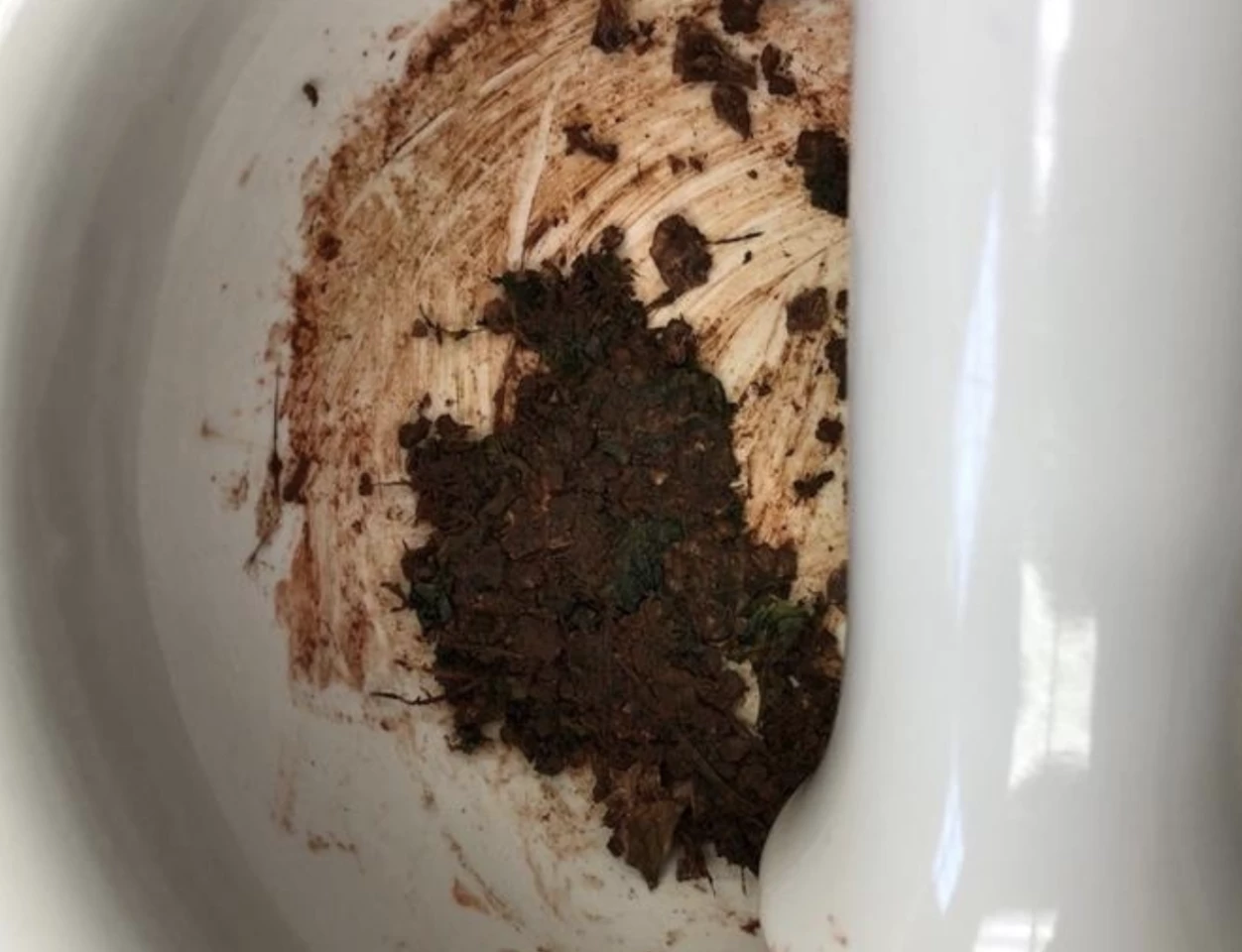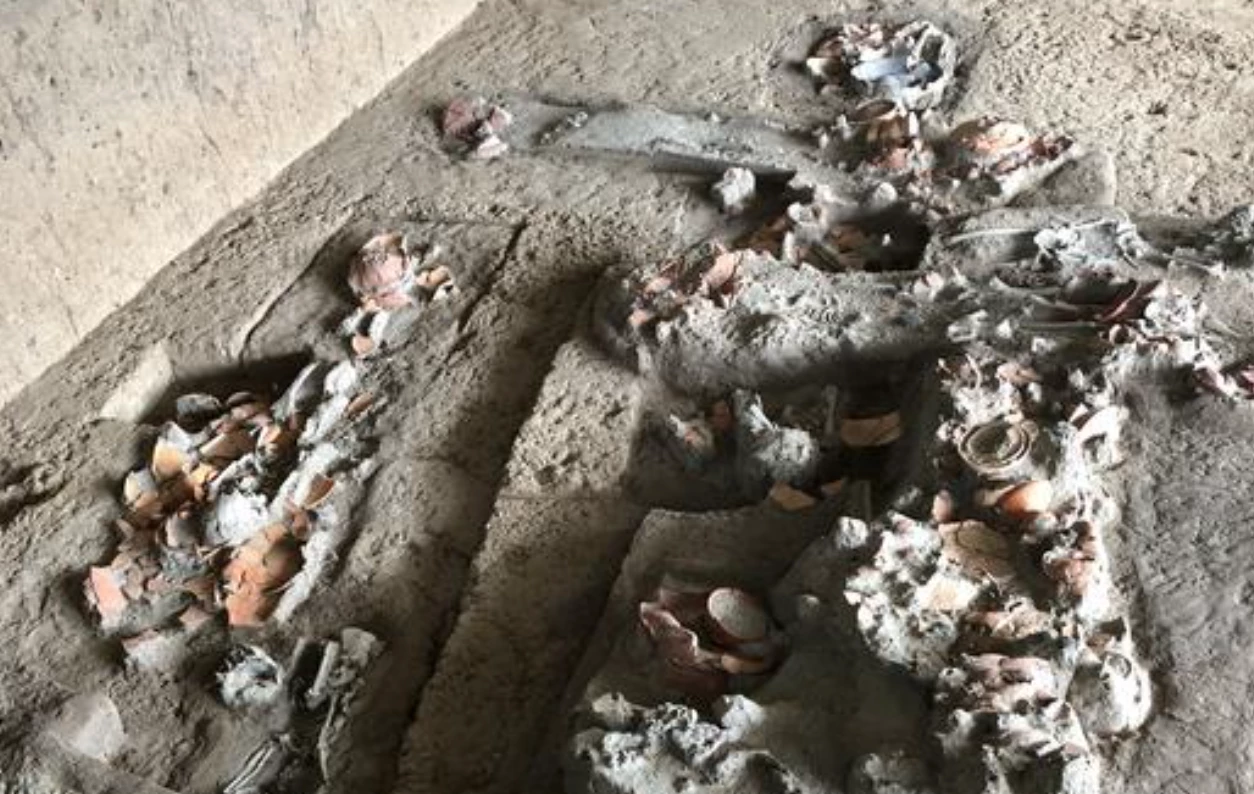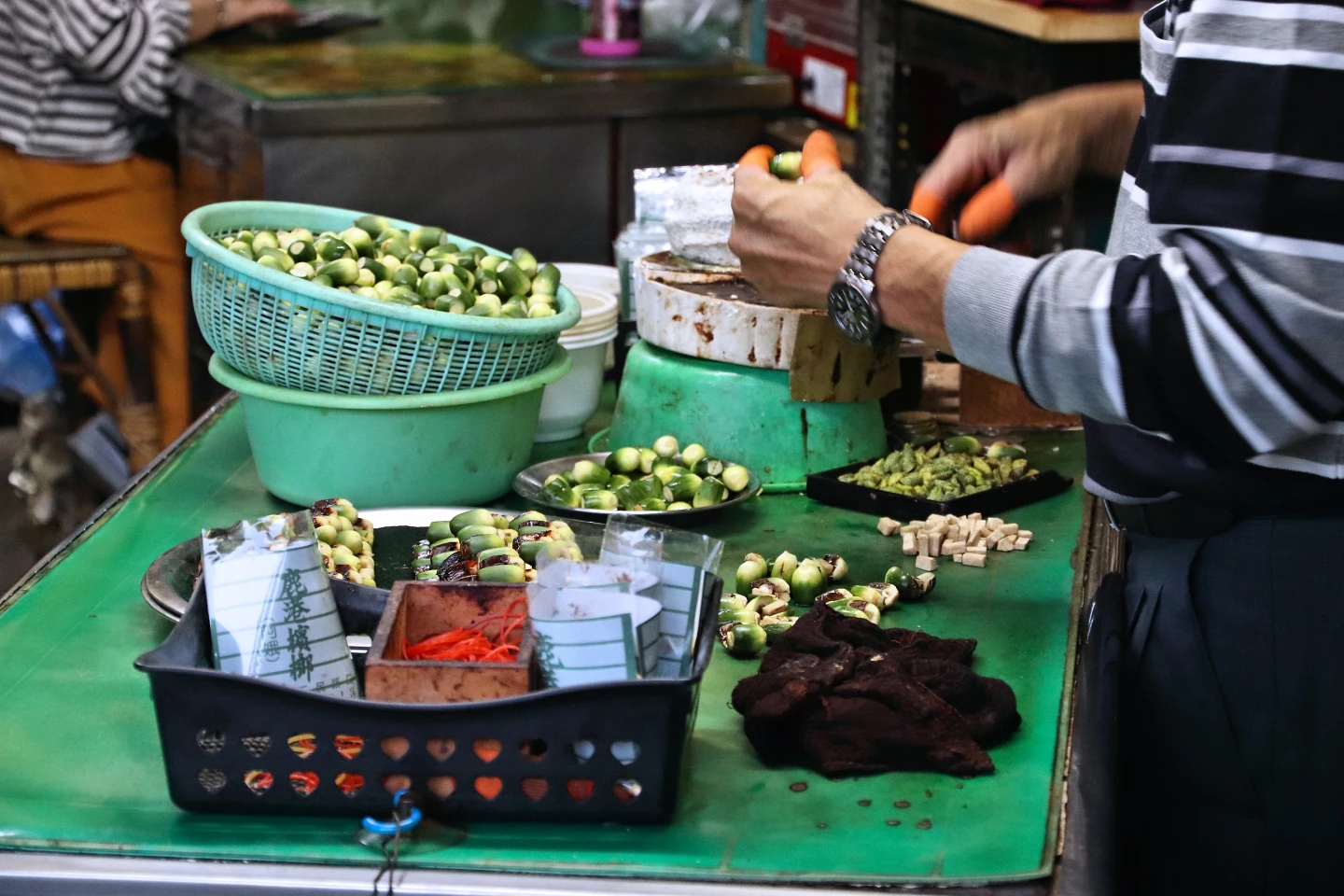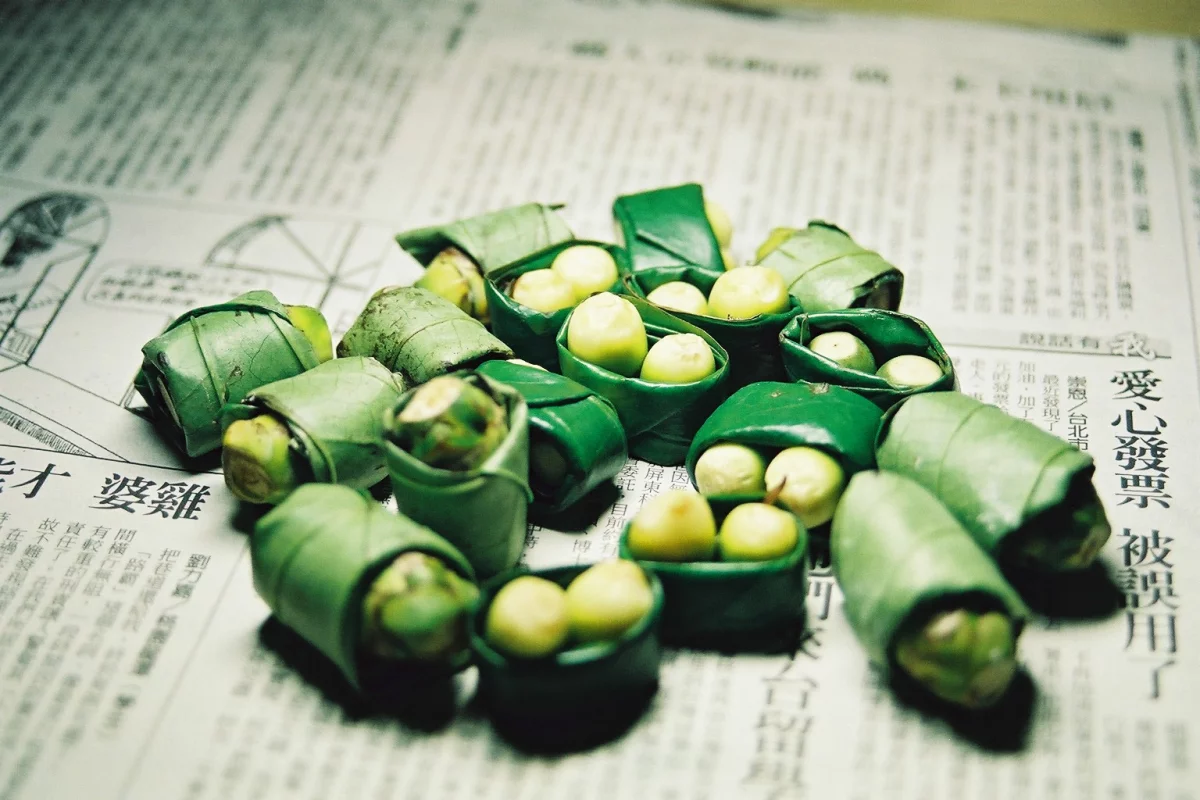Traces of a psychoactive compound has been detected in the dental plaque of a Bronze Age woman buried in Thailand some 4,000 years ago, making it the earliest direct chemical evidence of humans chewing betel nut. It remains the world's fourth most popular drug, after tobacco, caffeine and alcohol.
Researchers from Chiang Mai University analyzed 36 plaque samples from half a dozen Bronze Age burials, using liquid chromatography–mass spectrometry (LC-MS) to identify key betel nut and associated preparation chemicals, including arecaidine (from areca nut), hydroxychavicol (betel leaf) and nicotine (tobacco).
Of the 36 samples of dental calculus scraped from ancient teeth, three samples – each from a different molar – had molecular signatures matching the team's reference (control) for betel nut. The three teeth belonged to a young woman believed to have been 25-35 years old at the time of death and subsequent burial at Nong Ratchawat, Central Thailand.

“We used dried betel nut, pink limestone paste, Piper betel leaves, and sometimes Senegalia catechu bark and tobacco," said first author Piyawit Moonkham, of the control they used to test the plaque samples. "We ground the ingredients with human saliva to replicate authentic chewing conditions."
The discovery is an important one, as it expands the timeline of betel nut use by about 1,000 years, and shows the potential of such biomolecular analysis to identify what can't be seen by the naked eye. While long-term chewing of betel nut can leave deep red stains on teeth, they can't withstand such a test of time.
“We demonstrate that dental calculus can preserve chemical signatures of psychoactive plant use for millennia, even when conventional archaeological evidence is completely absent,” said senior author Shannon Tushingham, the associate curator of anthropology at the California Academy of Sciences. “In essence, we’ve developed a way to make the invisible visible – revealing behaviors and practices that have been lost to time for 4,000 years.”

Betel nut – the seed of the fruit of the areca palm – chewing, sometimes called betel quid chewing, may be somewhat of a mystery in the West, but it's commonplace throughout Asia and many Pacific Islands. Preparation has cultural and regional variations, but the seed is usually chewed with slaked lime and betel leaves, and chewing releases a red juice that's often then spat out. The process releases the psychoactive compound arecoline, which produces a mild stimulant effect – alertness, warmth and a sense of wellbeing.
It's also been viewed as a tradition that, in the past, has been tied to social bonding, rites of passage ceremonies and other celebrations.
“The presence of betel nut compounds in dental calculus does suggest repeated consumption, as these residues become incorporated into mineralized plaque deposits over time through regular exposure,” explained Tushingham.
In recent times, however, the practice has been increasingly tied to serious oral health problems, including cancer. Papua New Guinea, where half of the population's nine million people frequently chew betel nut, now has the world's highest incidence of oral cancer. It also contributes to the development of metabolic syndrome, liver cirrhosis and chronic kidney disease. While it has some positives, betel nut having antioxidant, anti-inflammatory, antiparasitic and antiseptic properties, long-term use is widely considered a serious health risk.
In Taiwan, government health campaigns have seen a drop in use, particularly among younger generations in urban areas, but the betel nut is steeped in the island's history. It's most closely associated with the phenomenon of the bīnláng xīshī – betel-nut beauties – young women in revealing outfits selling their products from small roadside shopfronts to passing vehicles. These days you're more likely to see older Taiwanese – predominantly women – preparing their little green packages from behind bankteller-like glass windows or occasionally at night market stands.

“Understanding the cultural context of traditional plant use is a larger theme we want to amplify – psychoactive, medicinal, and ceremonial plants are often dismissed as drugs, but they represent millennia of cultural knowledge, spiritual practice, and community identity,” Moonkham added. “Archeological evidence can inform contemporary discussions by honoring the deep cultural heritage behind these practices.”
These new findings shed light on an ancient tradition, even when no visible evidence is present.
“Dental calculus analysis can reveal behaviors that leave no traditional archaeological traces, potentially revolutionizing our understanding of ancient lifeways and human-plant relationships,” Tushingham said. “It could open new windows into the deep history of human cultural practices.”
The research was published in the journal Frontiers in Environmental Archaeology.
Source: Chiang Mai University via Scimex







